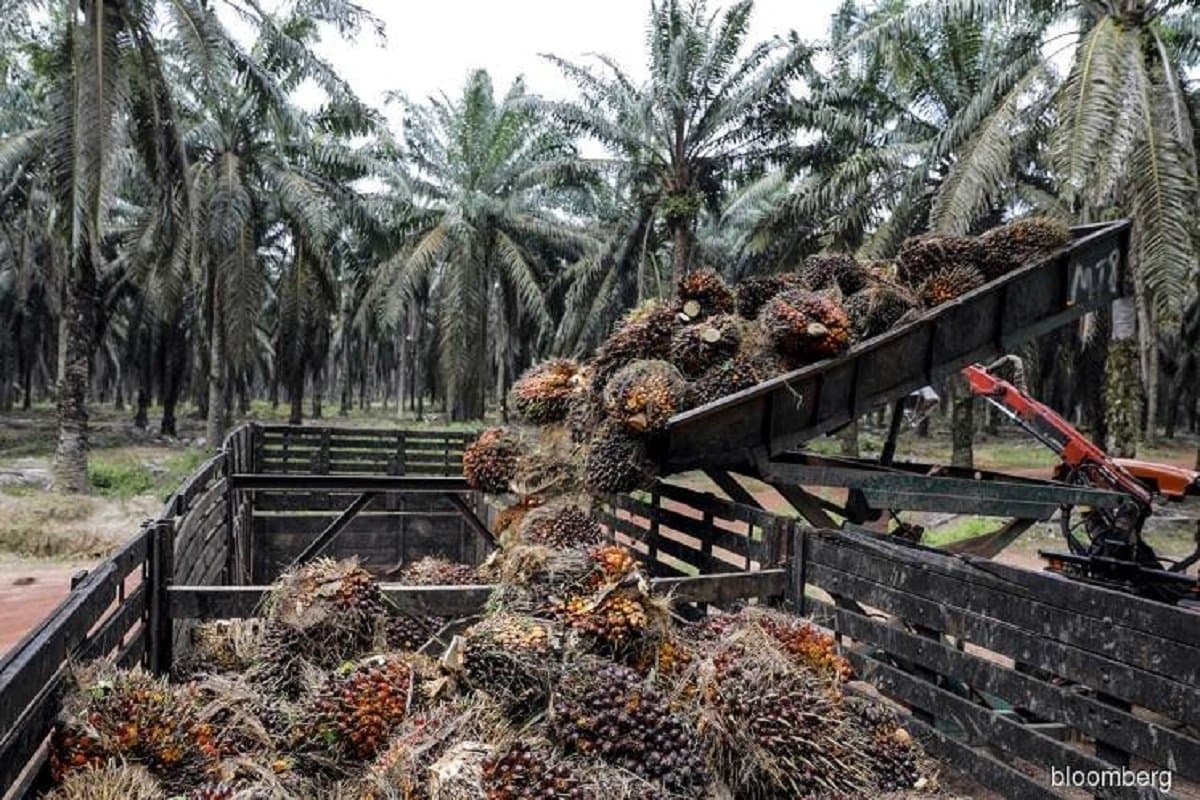
KUALA LUMPUR (Feb 24): As the conflict in the Black Sea region between Russia and Ukraine continues to escalate, oil of all types has gone on a tear, including crude palm oil (CPO) which has set a new record high since 2008 of around RM7,000 a tonne, putting a poser over whether prices would be sustained over the longer term.
At the time of writing on Thursday (Feb 24), March 2022 CPO futures were up RM454 at RM6,960 a tonne on the Bursa Malaysia Derivatives exchange after trading between RM6,520 and RM7,000.
Meanwhile, CPO futures contracts for April were trading at RM6,669 (up RM416) and May's futures at RM6,369 (up RM387).
The market consensus believes that CPO prices will remain elevated due to tight short-term supply caused by low palm oil inventory levels in January 2022 — which fell 4% month-on-month but grew 17% year-on-year to 1.55 million tonnes according to the Malaysian Palm Oil Board (MPOB) — and a lagging recovery in production of the commodity.
In a note dated Feb 11, CGS-CIMB Research said the inventory levels reported by the MPOB were lower versus market expectations of about 1.58 million to 1.59 million tonnes due to higher-than-expected export demand in December 2021, noting that the high prices were a reflection of demand rationing.
CGS-CIMB head of research Ivy Ng Lee Fang told theedgemarkets.com the recent CPO prices may not be sustainable in the long term but said that the prices might remain elevated over the next one to three months depending on developments of several key factors.
These include the unresolved labour shortage issue, the introduction of the domestic market obligation rule in Indonesia, the drought in South America, as well as how the Ukraine crisis pans out over the period.
Her current forecast for the average of Malaysian CPO prices stands at RM4,100 a tonne for 2022, one of the highest among research houses' forecasts. For comparison, HLIB Research is forecasting an average of RM4,300 per tonne, followed by MIDF Research at RM3,300 a tonne, while UOB Kay Hian Research is expecting RM3,300 to RM3,800 per tonne.
“The first key driver of the CPO price rally was, of course, the one-year long labour shortage which we were supposed to resolve at the beginning of 2022, but it remains unresolved,” Ng said.
Meanwhile, the second key factor affecting the CPO market is Indonesia's domestic market obligation rule — introduced on Jan 27 — which requires palm oil exporters to sell 20% of their intended export volume in the domestic market at a price set by the government before being granted a palm oil export permit.
Ng said the new rule had affected export volume, which further caused supply tightness in the market as Indonesia is the largest palm oil exporter in the world.
She added that South American countries such as Brazil and Argentina, which produce the bulk of soybean oil for global consumption, had suffered from an unexpected drought which had affected production yields and driven up soybean oil prices, leading to countries like India to seek out alternative oils such as Malaysian palm oil.
“Last but not least, the Ukraine-Russia tension is a big factor for the CPO rally as India purchases a lot of sunflower oil from the region.
“There are concerns that they cannot source for sunflower oil, a competing oil to palm oil. There are sunoil stocks, but the export of sunoil might be restricted due to any potential escalation.
“This has driven India to source for alternatives elsewhere, and due to this, CPO prices have continued to trend upwards,” she said.
Meanwhile, Ng highlighted that investors should keep their eyes peeled on developments of the labour shortage issue as it would affect production yields, as well as long-term implications of higher cost of production due to higher fertiliser prices.
Plantation companies could see a margin squeeze as productivity trends downwards due to the labour issue while production costs increase, she explained.
Asked for her CPO price forecast for next year, she said that it is moot to aggressively forecast CPO prices for 2023 and beyond.
“We need to see how this year turns out in terms of supply and demand; whatever happens this year will affect next year's prices.
“More importantly, we are focusing on the short term on whether all these issues can be resolved or not. If it escalates, prices will become higher and higher, leading to inflation, which is generally negative for the global economy,” Ng said.
The last time CPO futures surged to record high levels in the beginning of the year was between January and March 2008, when the commodity's futures reached a record high of RM4,486 a tonne against the backdrop of the global financial crisis. It remains to be seen how prices would trend going forward.